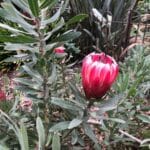The words “violet flowers” often makes you think of violet, lavender, or purple-hued blooms that add beauty to home gardens and different floral arrangements. However, unknown to some, flowers named violets actually exist.
In fact, violets are one of the most popular flowers used in gardens and as houseplants. Read more below and get to know everything about violets.
What Are Violets?
Violets are low growing annuals or short-lived perennials from the Viola genus in the Violaceae (Violets) family. They reproduce through seeds and short, branching rhizomes (1).
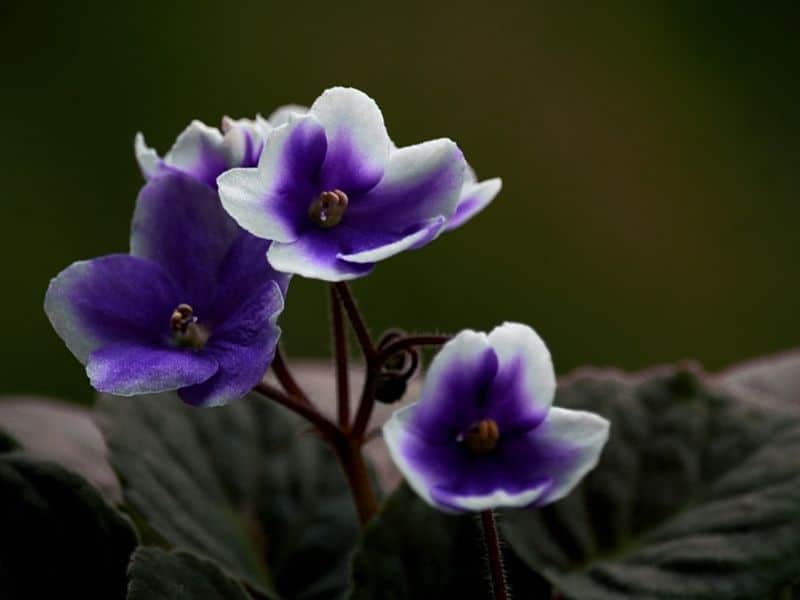
The largest genus in its botanical family, the Viola genus includes at least 500 different species and thousands of varieties and hybrids. Collectively known as violas or violets, these plants also go by the names sweet violets, pansies, garden pansies, or johnny-jump-ups and more, depending on the species.
Plant Description
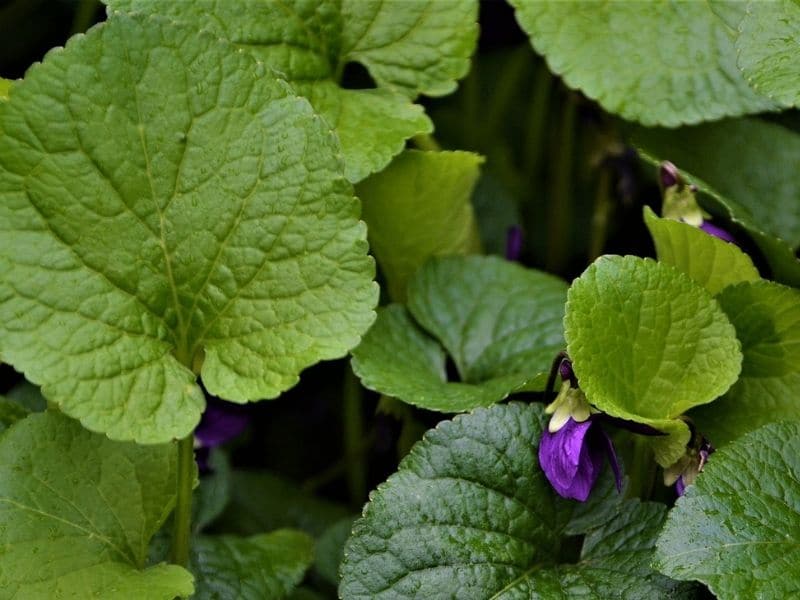
Plants in the Viola genus generally feature scalloped, heart-shaped leaves that are arranged alternately. The leaves of some species, however, have different shapes. Regardless, violet leaves may grow either on the same stalk as the flower or separate stalks.
The flowers of violets typically grow singly on a stalk. They are small, five-petaled, and often come in blue or violet shades, but other types offer yellow, white, cream, or multi-colors.
Origin and Distribution
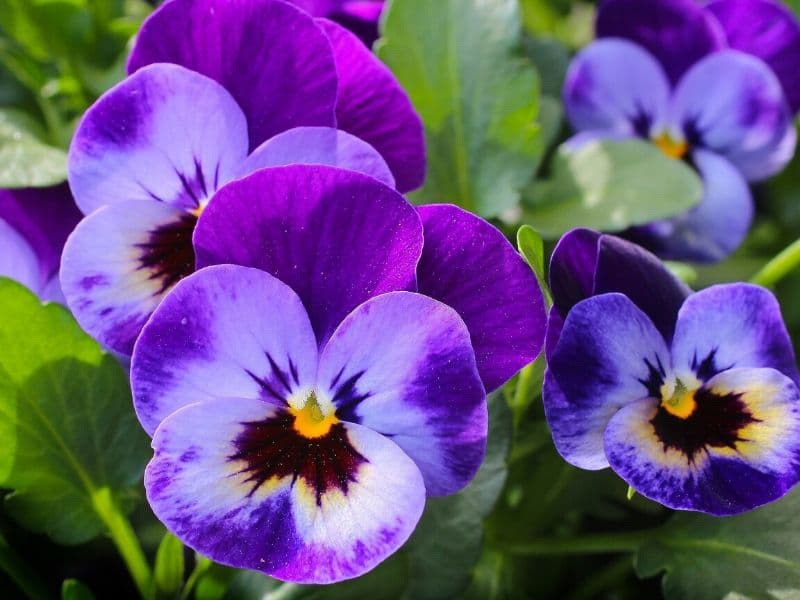
One of the most recognized flowering plants, violets can be found worldwide both in the wild and in cultivation. Though they are prevalent in most parts of the globe, they can be found most abundantly in areas with temperate climates in the Northern Hemisphere. Some species, like the Sweet Violet (V. odorata), are native to Europe and Asia.
Uses
Aside from their ornamental value, violets are also valued as edible flowers. They are commonly used in salads as ingredients, garnishes, or drinks. Violets are also used in medicines, primarily as a laxative.
True Violets (Violas) vs African Violets (Saintpaulias)
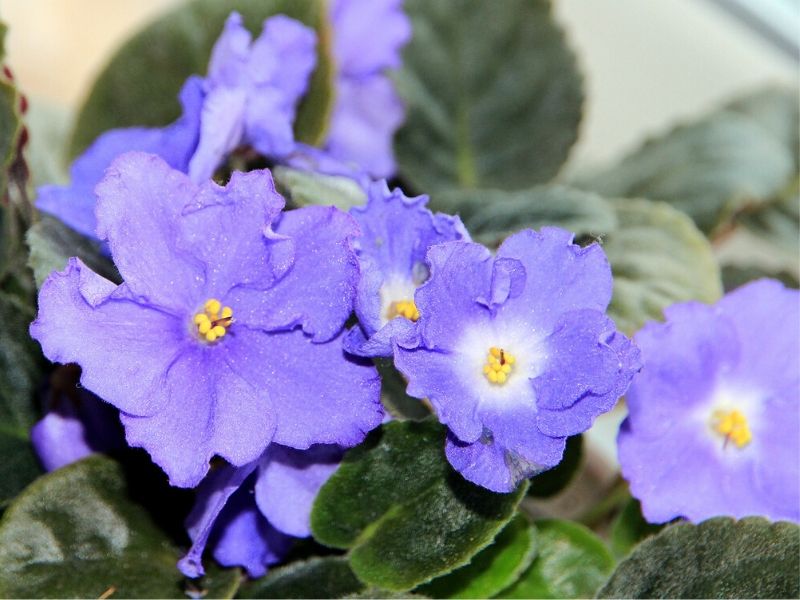
While Saintpaulias are commonly known as African Violets, they are not from the same botanical family as the True Violets.
Unlike violets from the Viola genus, African Violets are from the Streptocarpus genus. They are common houseplants with shallow roots and fleshy leaves. Their flowers have five petals like violet flowers, but what sets them apart is the distinct eye on each bloom. African Violets bloom throughout the summer.
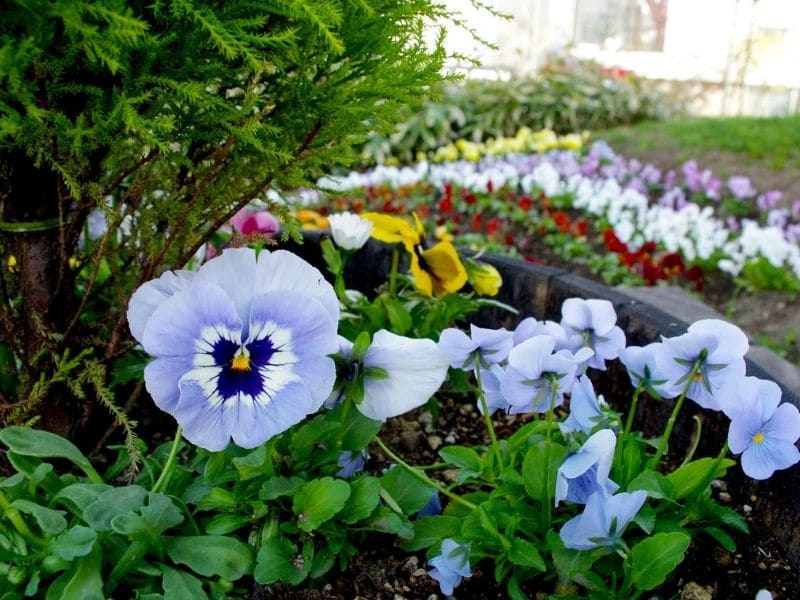
Popular Violet Varieties and Types
As the official February birth flower, there are many beautiful types of violets including wild violets you can grow. Here are some common ones:
Sweet Violet
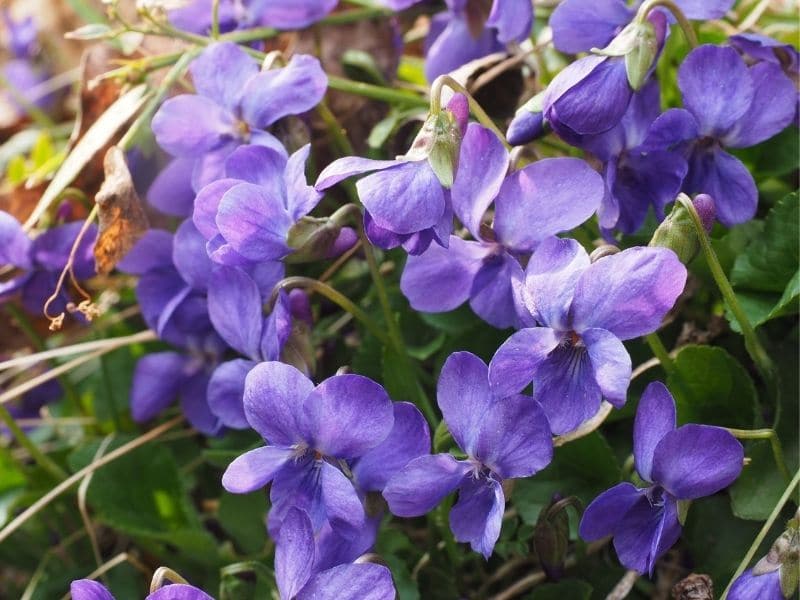
Scientific Name: Viola odorata
Common Names: Sweet Violet, Common Violet, Devon Violet, Sweet Blue Violet, Fragrant Garden Violet
Sweet violets are showy flowering perennial plants native to Europe. Among other recognized violet species, these ones have always been regarded for their sweet fragrance. Their attractive, blue, purple, or lavender spring-blooming flowers are edible and grow only about a half-inch each.
Like the flowers, the heart-shaped leaves of these violets are also edible. They can be eaten fresh, candied, or added to salads, iced drinks, or desserts as garnish (2).
Known Cultivars of Sweet Violets:
- ‘Alba’
- ‘Clive Groves’
- ‘Queen Charlotte’
- ‘Rosina’
- ‘Royal Robe’
- ‘White Czar’
Yellow Wood Violet
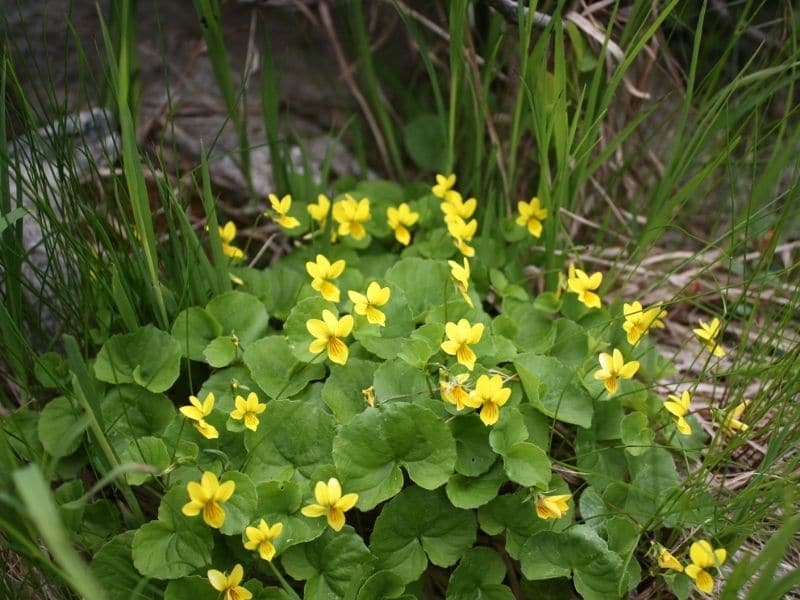
Scientific Name: Viola biflora
Common Names: Yellow Wood Violet, Two-color Violet, Alpine Yellow-Violet, Arctic Yellow Violet
Yellow Wood Violets, otherwise known as Viola biflora, are perennial herbs that feature beautiful small yellow flowers. They grow in parts of Europe, Asia, and Western North America. Three recognized varieties of this species include V. biflora var biflora, V. biflora var acuminata, and V. biflora var. rockiana.
Hairy Violet
Scientific Name: Viola hirta
Common Name: Hairy Violet
Viola hirta or more commonly called Hairy Violet is a prevalent violet species similar to Sweet Violets.
Like Sweet Violets, this plant has no erect stems with its leaves and flowers arising directly from the rootstock. The leaves are heart-shaped, and the flowers are small. However, Hairy Violets have one distinct feature that cannot be found in most Viola species. The entire plant is hairy, resulting in a gray-green appearance when dry.
Common Blue Violet
Scientific Name: Viola sororia
Common Names: Common Blue Violet, The Lesbian Flower, Common Meadow Violet, Purple Violet, Woolly Blue Violet, Wood Violet, Hooded Violet
Common Blue Violet is a native perennial flowering plant that reproduces through seeds and rhizomes. It features glossy, green, heart-shaped, and hairless leaves and five-petaled purple, blue, or white flowers (3).
The flowers bloom in spring to summer. Like other violet plant species, the Common Blue Violet self-seeds freely and can be potentially invasive as weeds, especially in fertile and moist areas. ‘Freckles’ and ‘Rubra’ are a few famed cultivars of this attractive violet flower species (4).
Bird’s Foot Violet
Scientific Name: Viola pedata
Common Names: Bird’s Foot Violet, Mountain Pansy
V. pedata, known as the Bird’s Foot Violet or Mountain Pansy, is a violet species native to central and eastern North America. It features unique, deeply divided leaves comparable to a bird’s foot.
The plant is a low, clumping perennial that grows only up to 3 inches in height. It flaunts dainty flowers in shades of lilac, deep blue, and violet that bloom from mid to late spring (5).
Johnny Jump-Up
Scientific Name: Viola tricolor
Common Names: Johnny Jump-Up, Come-and-Cuddle-Me, Heart’s Delight, Heart’s Ease, Wild Pansy
Johnny Jump-Ups are one of the most well-liked species of violets. They are annuals, biennials, or short-lived perennials that grow up to 5 inches in height.
Also called Wild Pansy, these flowering plants produce purple, yellow, and white 1-inch flowers that bloom from late spring to fall (6).
How to Grow and Care for Viola Plants
If you love seeing colorful flowers in your garden, especially blue and purple flowers, then you need to plant some violets. Here are our planting tips:
How to plant violas
Growing a Viola plant is easy. It can be grown either by sowing seeds indoors or directly planting them in the garden or containers.
Growing from seeds: Growing violets from seeds is pretty straightforward and easy. You can do this option if you’d like to start growing violets indoors. Sow the seeds into a sterile potting mix, ensuring that the seeds are entirely covered. Place the container in a warm location with temperatures of about 65 to 70 degrees Fahrenheit and keep it moist to promote germination. The viola seeds will begin to germinate after 10 to 14 days. Transplant the conditioned seedlings outdoors 8 to 12 weeks after sowing.
Plant spacing: When planting or transplanting violets directly into the ground, allow about 6 to 8 inches of space between plants. Trailing varieties require more plant spacing and should be planted about 10 to 12 inches apart.
Light
Violets can tolerate full sun with at least 6 hours of direct sunlight a day. However, these garden plants will thrive better in partial shade or shaded areas where they receive direct sunlight for only 2 to 6 hours per day. Exposing the plant to too much sunlight may result in brown viola leaf spot. It also often cause the flowers to fade quickly.
Soil
Violas grow best in fertile, moist, and well-draining soil. Adding organic material to your slightly acidify garden soil will highly benefit this plant’s growth. A peat-based potting mix is ideal if you are planting them in a pot or container.
Water
Violets like regular watering, but excessive water may cause more harm than good. Water the plants regularly, ideally when the top soil feels dry, and allow the soil to dry out between irrigations. Underwatering should also be avoided. While these plants can tolerate drought for a short period of time, the lack of water affects the plant’s flowering ability.
Temperature
The ideal temperature for growing violet flowers is between 40 to 70 degrees Fahrenheit. Violets are cold-tolerant plants, but cool spring temperatures drops of below 20 degrees Fahrenheit may damage the existing flower buds.
Fertilizing
Just like many flowers, violets benefit from the proper use of fertilizers during their growing season. Applying a slow-release fertilizer in spring and again in late summer will increase the plant’s vigor and encourage beautiful bloom development in fall. Do not overdo fertilizing since that may result in leggy growth.
Pruning
To prevent leggy or overgrown plants, trim back any excessively long or sprawling stems. This encourages bushier, more compact plants. Aim to maintain a balanced shape and size by selectively trimming longer stems. Avoid cutting into the central crown of the plant.
Regular pruning promotes healthy growth, prolongs flowering period, and prevents the plant from becoming overcrowded. Additionally, remove any spent flowers, also known as deadheading, to encourage continuous blooming throughout the growing season.
Common Pest and Diseases of Violet Flowers
Violets, in general, have no serious pests and diseases. However, the plants may have some issues with powdery mildew, pansy downy mildew, violet gall midge, snails, slugs, spider mites, aphids, and other minor pests (4).
Another common disease of violets is gray mold. It is a disease caused by the fungus Botrytis that manifests through water-soaked spots, followed by gray-brown marks with woolly, gray growth. Proper spacing between plants helps prevent gray mold since good airflow and sufficient sunlight inhibit the disease’s development.
What can I plant with violets?
Here are some flowering ornamentals that go well with violets in any garden:
FAQs
Do violas prefer full sun?
Violas prefer partial shade to full sun, although they can tolerate some shade. Providing them with morning sun and afternoon shade is ideal for maintaining their health and vigor.
How long does violas last?
Violas are cool-season annuals that can last from early spring to late spring, depending on the climate and growing conditions. With proper care, they can bloom continuously for several weeks or even months.
Are violas easy to maintain?
Violas are generally easy to maintain, requiring regular watering to keep the soil evenly moist, especially during dry periods. Deadheading spent flowers and occasional fertilization can help promote continuous blooming and healthy growth.
How do you take cuttings from viola?
To take cuttings from violas, select healthy stems with several leaves and use clean, sharp scissors or pruning shears to cut them just below a leaf node. Remove any lower leaves to expose the stem, and dip the cut end in rooting hormone before planting in a well-draining potting mix. Keep the cuttings moist and provide indirect light until roots develop.
What is the best fertilizer for violas?
A balanced, water-soluble fertilizer with a ratio such as 10-10-10 or 20-20-20 is suitable for violas. Apply the fertilizer according to the manufacturer’s instructions, usually every 4-6 weeks during the growing season, to promote healthy growth and prolific flowering.
Up Next: Violet Flower Meaning and Symbolism
References
Reference list
- Wild violet | University of Maryland Extension (2020). Available at: https://extension.umd.edu/hgic/topics/wild-violet
- Viola odorata (Common Violet, Devon Violet, English Violet, Florist’s Violet, Fragrant Garden Violet, Garden Violet, Sweet Blue Violet, Sweet Violet, Violet, Wood Violet) | North Carolina Extension Gardener Plant Toolbox (2020). Available at: https://plants.ces.ncsu.edu/plants/viola-odorata/
- Viola papilionacea | UMass Amherst Landscape, Nursery & Urban Forestry Program (2020). Available at: https://extension.umass.edu/landscape/weeds/viola-papilionacea
- Viola sororia (Common Blue Violet, Confederate Violet, Dooryard Violet, Florida Violet, Hooded Blue Violet, Hooded Violet, Meadow Violet, Missouri Violet, Purple Violet, Sister Violet, Wild Violet, Wood Violet, Woolly Blue Violet) | North Carolina Extension Gardener Plant Toolbox (2020). Available at: https://plants.ces.ncsu.edu/plants/viola-sororia/
- Nuttall’s Violet (2020). Available at: https://www.fs.fed.us/wildflowers/plant-of-the-week/viola_pedata.shtml
- Viola tricolor (Come-and-Cuddle-Me, Heart’s Delight, Heartsease, Heart’s Ease, Jack-Jump-Up-and-Kiss-Me, Johnny Jump Up, Johnny Jump-Up, Johnny-Jump Up, Love-in-Idleness, Pansies, Pansy, Perennial Viola, Three Faces in a Hood, Tickle-My-Fancy, Wild Pansy) | North Carolina Extension Gardener Plant Toolbox (2020). Available at: https://plants.ces.ncsu.edu/plants/viola-tricolor/
Close
*Featured image by depositphotos.com/[email protected]




